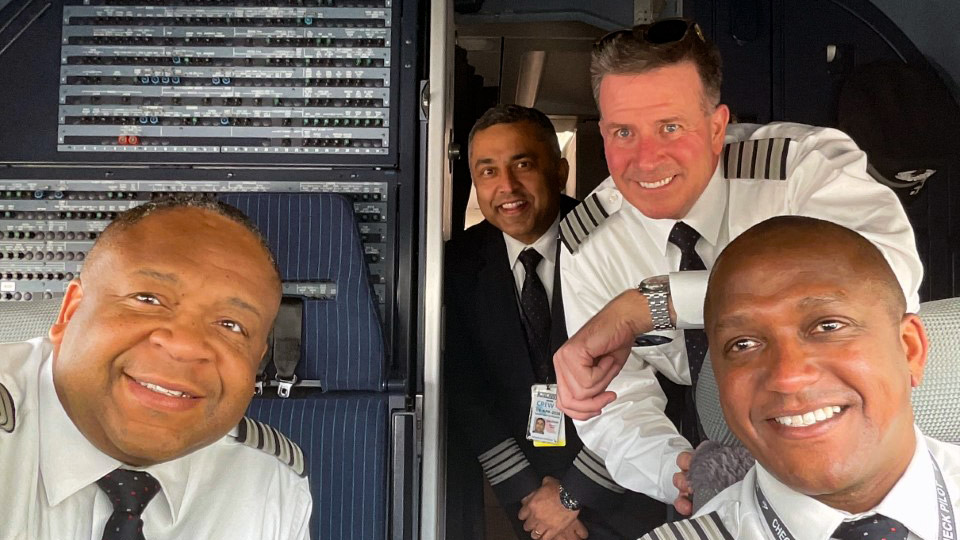Source: American Airlines

From left, Check Pilots Larcell Armstrong, Gautam Samant, Danny Ryan and Carleton McQueen.
Philadelphia (PHL) to Edinburgh, Scotland (EDI), in an Airbus A321neo. It’s not a typical route American flies on that aircraft, but throughout September, it was an incredibly important one.
Flying across the North Atlantic is nothing new for American, but it will be something new for American’s pilots who fly the Airbus A320 fleet (Airbus A319/A320/A321/A321neo). Starting next year, the airline will enter the Airbus A321XLR — an ultra-long-range version of the A321neo — into trans-Atlantic service. The A321XLR has a range of up to 4,700 nautical miles, opening up a world of new opportunities for American and its network. Of course, it also means new procedures and regions of the world for the airline’s pilots to learn.
Starting Sept. 4 and concluding Sept. 25, American conducted a series of 42 flights between PHL and EDI (and back!) for a group of check pilots to be trained and qualified to operate over the North Atlantic. From there, they’ll train American’s A320 line pilots on the territory, initially from the New York pilot base. Several of these flights involved Federal Aviation Administration inspectors so the initial eight check pilots could be qualified. After that, the first group of check pilots qualified the rest of the group.
These training flights focused on several unique aspects of flying in the North Atlantic:
- The North Atlantic Track system — a highway in the sky that changes daily based on wind conditions — uses procedures unique to this area.
- Air traffic control operations in this region are a non-radar environment, so controllers who oversee the airspace rely on position reports sent from aircraft (either automatically or via voice) instead of the radar-based air traffic control environment that most A320 pilots who fly domestically are used to.
- A320 pilots are communicating over different types of radios than they use domestically — and sometimes use satellites to communicate with ATC.
- A320 pilots must also learn about suitable diversion airports in the North Atlantic.
More details about American’s A321XLRs will be shared soon, including the new aircraft type’s initial international destinations.
| Airbus A321XLR at a glance | |
|---|---|
| Range | 4,700 nautical miles |
| First delivery | Q4 2025 |
| First route | JFK-LAX |
| Initial number of line pilots who will fly the XLR on trans-Atlantic routes | 45 |
